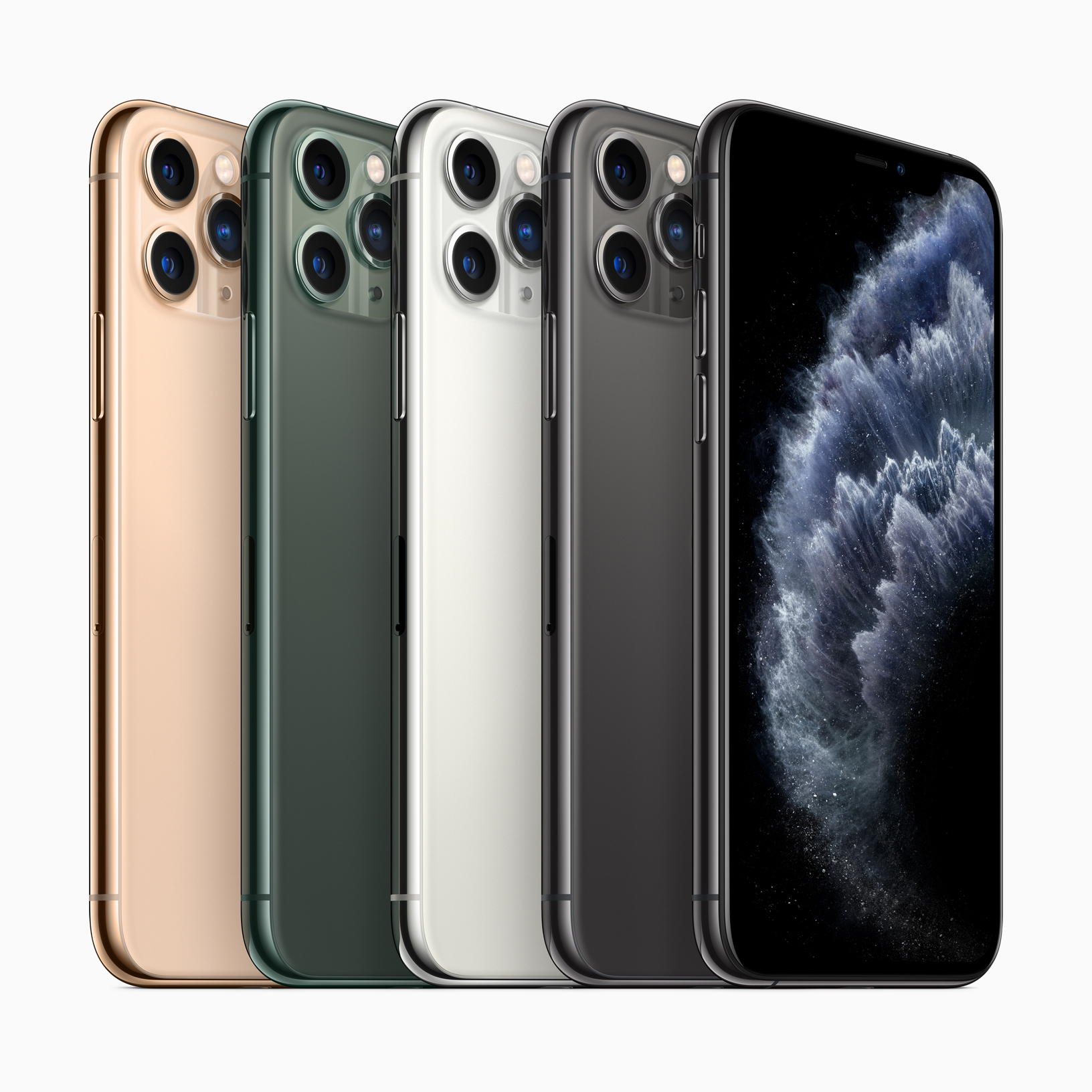Apple on Tuesday unveiled a trio of new iPhone models: The iPhone 11, the iPhone 11 Pro, and the iPhone 11 Pro Max. The new iPhones came alongside a handful of other updated gadgets, including the Apple Watch Series 5 and a seventh-generation entry-level iPad.
Apple showcased the new iPhones’ photography and videography features, which take advantage of the devices’ new processors and camera systems. Indeed, if you’re thinking about getting one of the new iPhone models, your choice may depend on how often you like to be behind the lens.
The cheaper iPhone 11 ($699 and up) doesn’t do much to change the formula when it comes to what people consider an iPhone. Its iterative design maintains the dimensions as well as the 6.1-inch display found on the iPhone XR it replaces, with colors like black, white, red, purple, yellow, and green to choose from. But it eschews a single rear camera for a pair of wide and ultra-wide 12-megapixel rear lenses. The iPhone 11 also brings night mode photography to the iPhone, a feature available for about a year from Android smartphone makers like Google and Samsung.

More striking changes can be found in the new iPhone 11 Pro ($999 and up) and bigger 11 Pro Max ($1,099 and up), the pair replacing the XS and XS Max. Most notable is the new triple-camera setup on the rear of these two devices, enabling “pro photography,” according to Apple’s Phil Schiller. The 12-megapixel camera array features an ultra-wide, wide, and telephoto camera, giving you an effective optical zoom range from 0.5x up to 2x.

The iPhone 11 Pro has a 5.8-inch display, while the larger 11 Pro Max touts a 6.5-inch screen, both of which add Dolby Vision and Atmos support. They’re also built with a stainless steel frame, along with a matte finish on any of its four colors: space grey, white, gold, and midnight green.
Like the iPhone XR and XS before them, the iPhone 11, 11 Pro, and 11 Pro Max feature the familiar all-screen facade, complete with upgraded 12-megapixel front-facing TrueDepth camera for Face ID unlocking. Inside all three is the new A13 Bionic chip, speeding up tasks like natural language processing, and providing a smoother experience when it comes to augmented reality apps, all while using less power. The iPhone 11, for example, claims an extra hour of battery life compared to the iPhone XR, while the larger 11 Pro Max claims an extra five hours when pitted against the iPhone XS Max.
That boost in processing power should help when it comes to the new photography options present on each iPhone 11 model, including night mode, improved portrait mode shots, and a photo-stitching feature Apple’s calling “Deep Fusion” photography, which combines multiple shots into a single high-quality image.
The second camera on the iPhone 11 should provide more than enough flexibility when trying to snap the perfect photo, but the additional telephoto lens on the 11 Pro and 11 Pro Max give the cinematically oriented one more tool to work with. The Pro models should also provide more options when it comes to recording 4K video, as demonstrated on stage by video recording app Filmic, which used all three rear cameras to capture three different video feeds simultaneously.
Picking between Apple’s new iPhone 11 models will in part depend on what you intend to do with a smartphone targeting professionals like artists, cinematographers, and other creatively-minded individuals. If you’re a visual artist, one of the Pro models might make more sense. But if you just need a phone for everyday tasks, the base iPhone 11 model may make more sense. Picking a new iPhone also means coming to terms with buying a smartphone that excels in photography, but lacks creature comforts found on rival devices, like in-screen fingerprint reading or wireless power sharing letting you charge accessories like earbuds without a cable.
Price is a factor, too. The base models of the iPhone 11, Pro, and Pro Max will start at $699, $999, and $1,099 respectively (and have a paltry 64GB of storage). Preorders will begin this Friday at 5 a.m. PT, with availability beginning September 20. Meanwhile, Apple’s older iPhones will still be available but at a lower price — the iPhone 8 will start at $449, and the iPhone XR will go for $599, a solid deal for a still-perfectly-fine handset.
More Must-Reads from TIME
- Donald Trump Is TIME's 2024 Person of the Year
- Why We Chose Trump as Person of the Year
- Is Intermittent Fasting Good or Bad for You?
- The 100 Must-Read Books of 2024
- The 20 Best Christmas TV Episodes
- Column: If Optimism Feels Ridiculous Now, Try Hope
- The Future of Climate Action Is Trade Policy
- Merle Bombardieri Is Helping People Make the Baby Decision
Write to Patrick Lucas Austin at patrick.austin@time.com